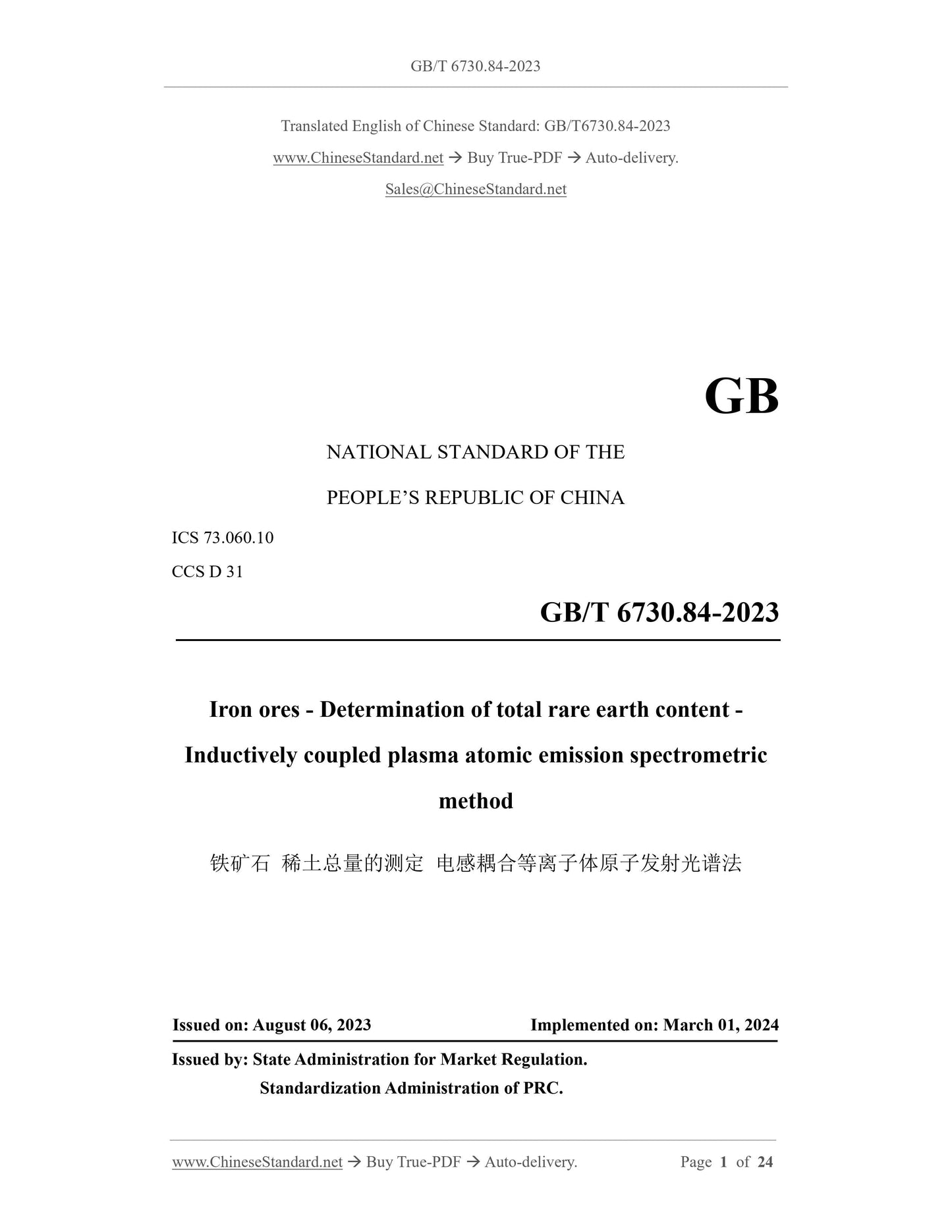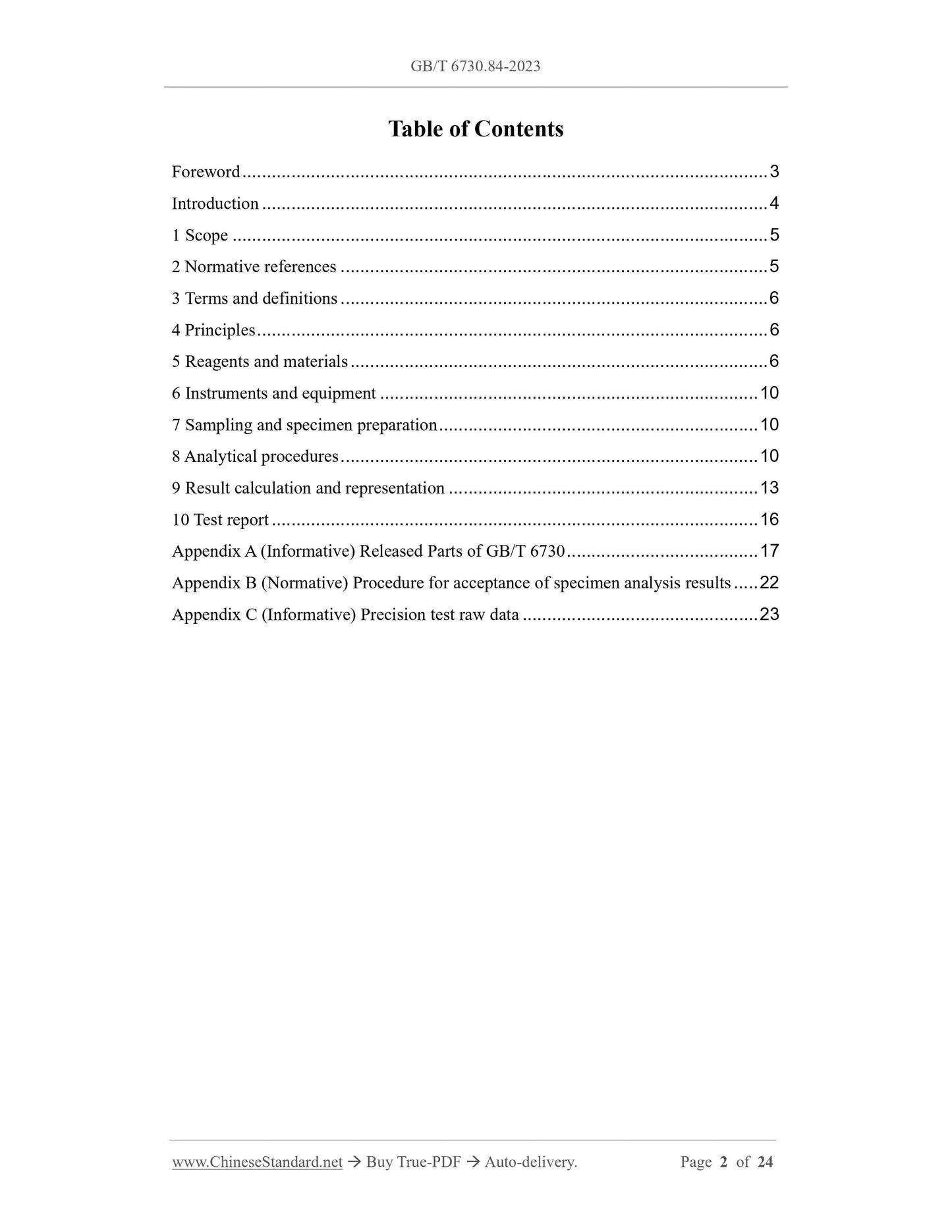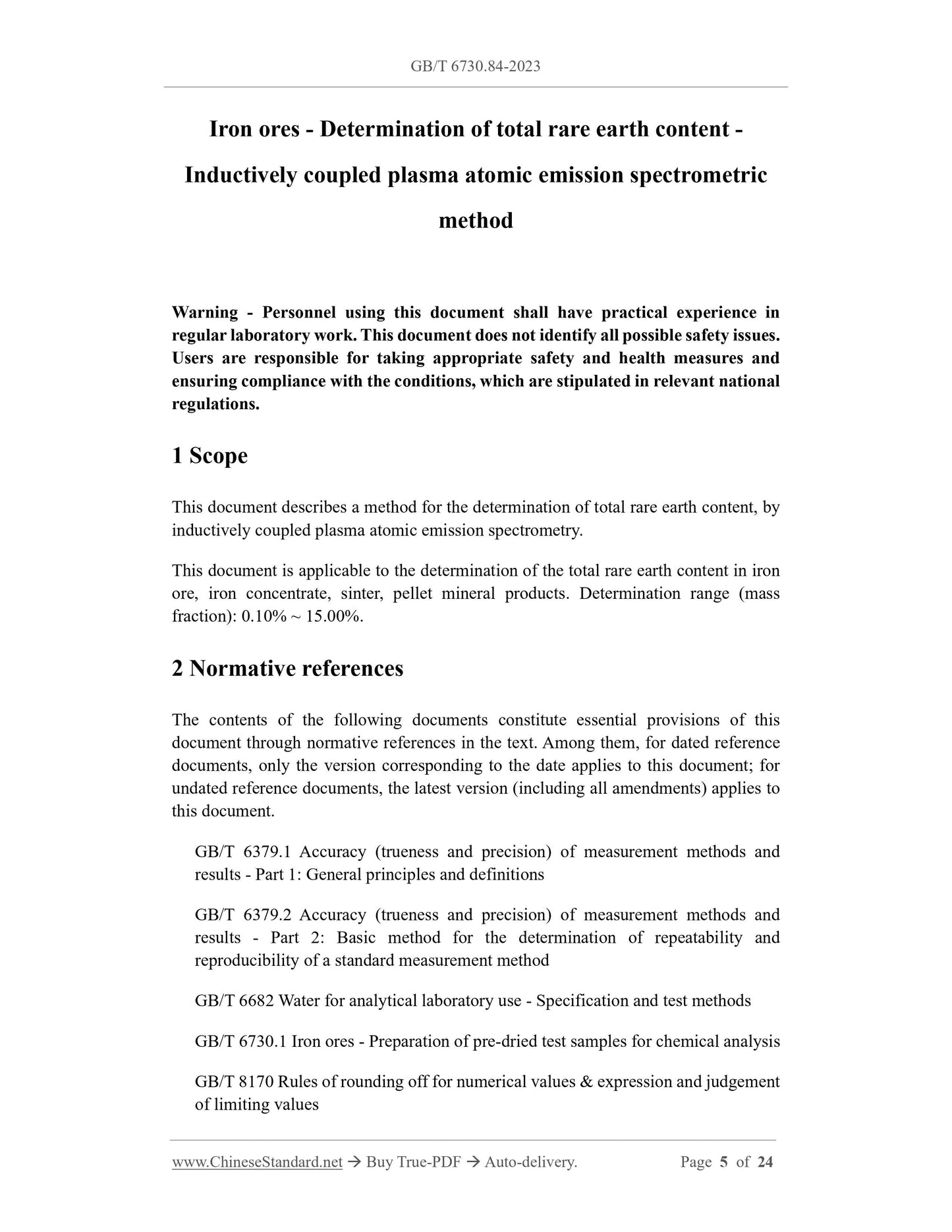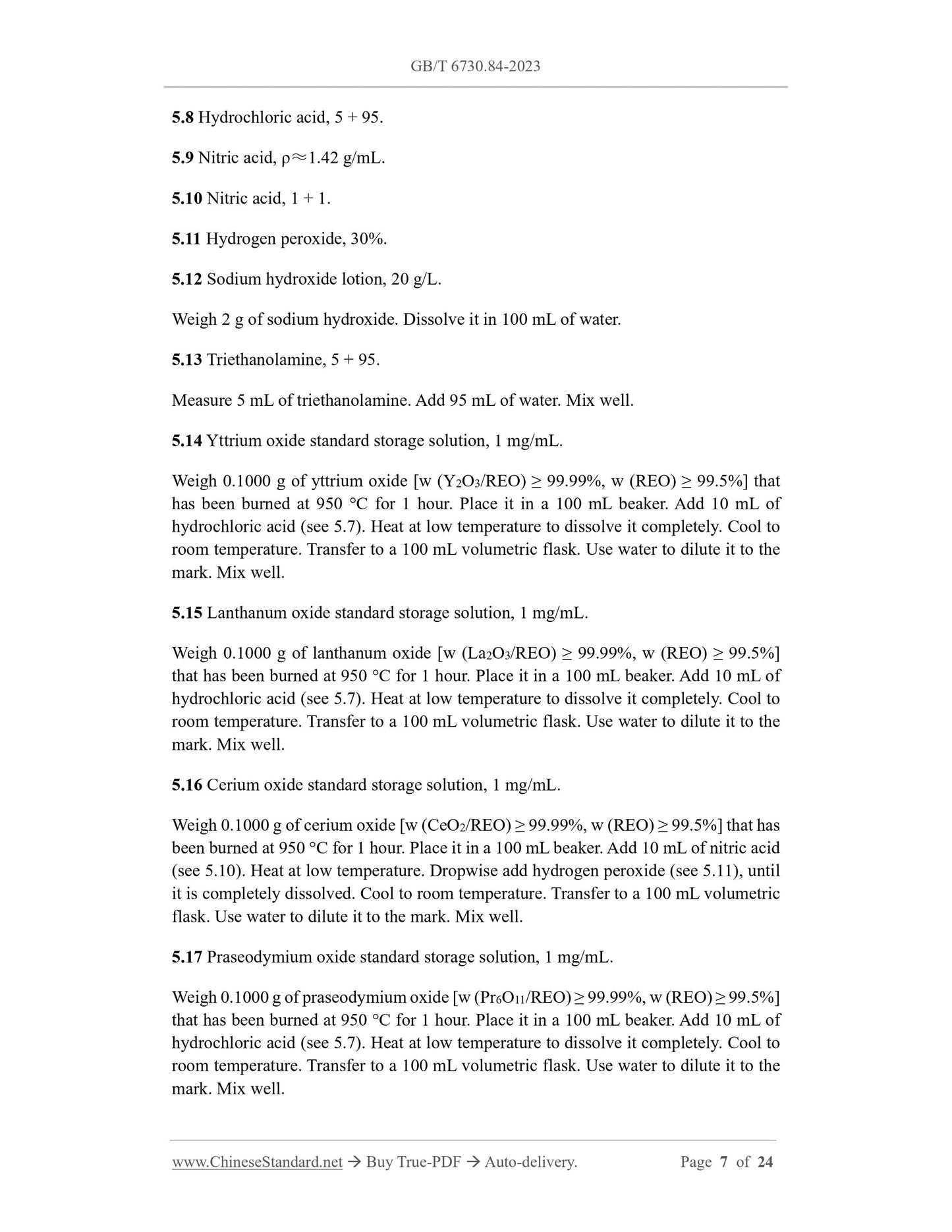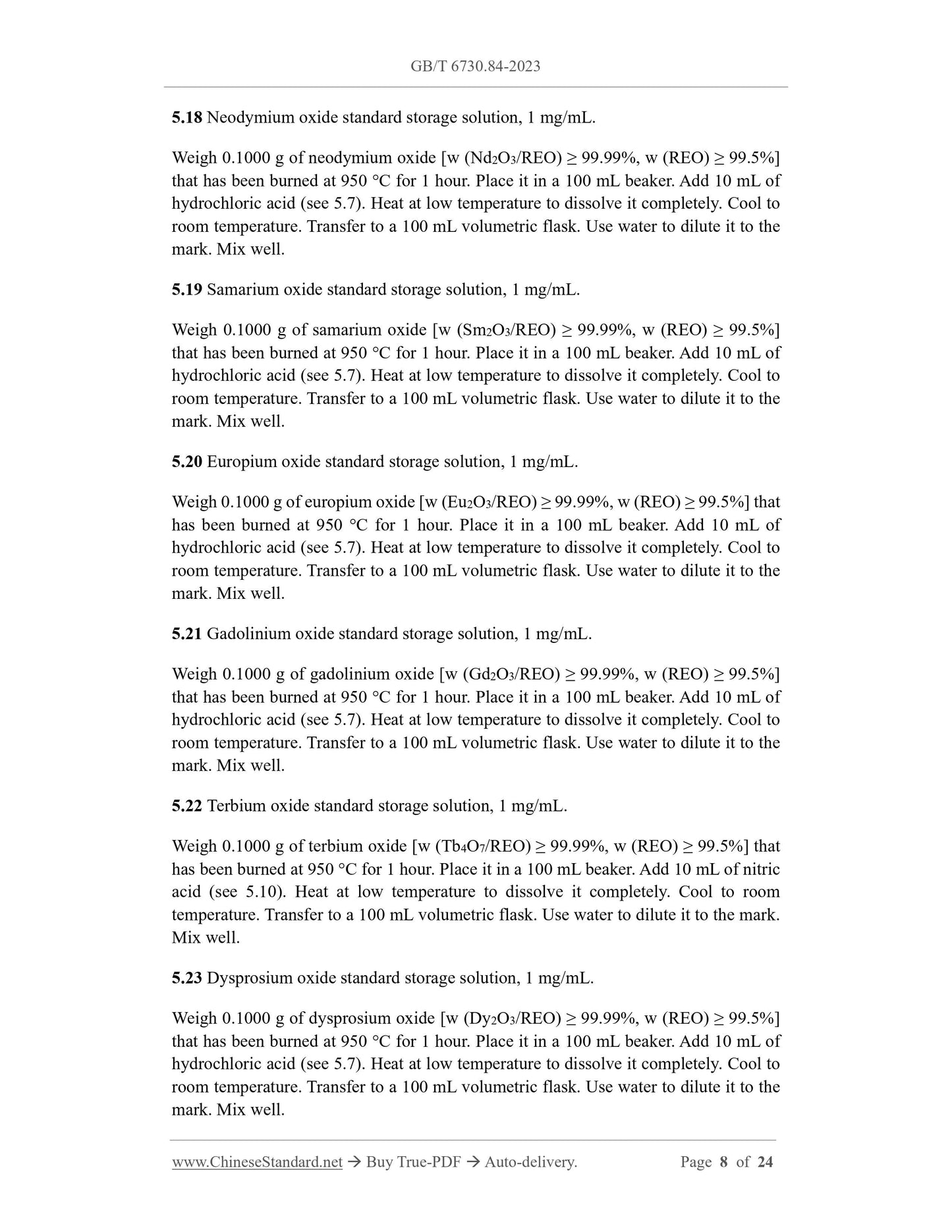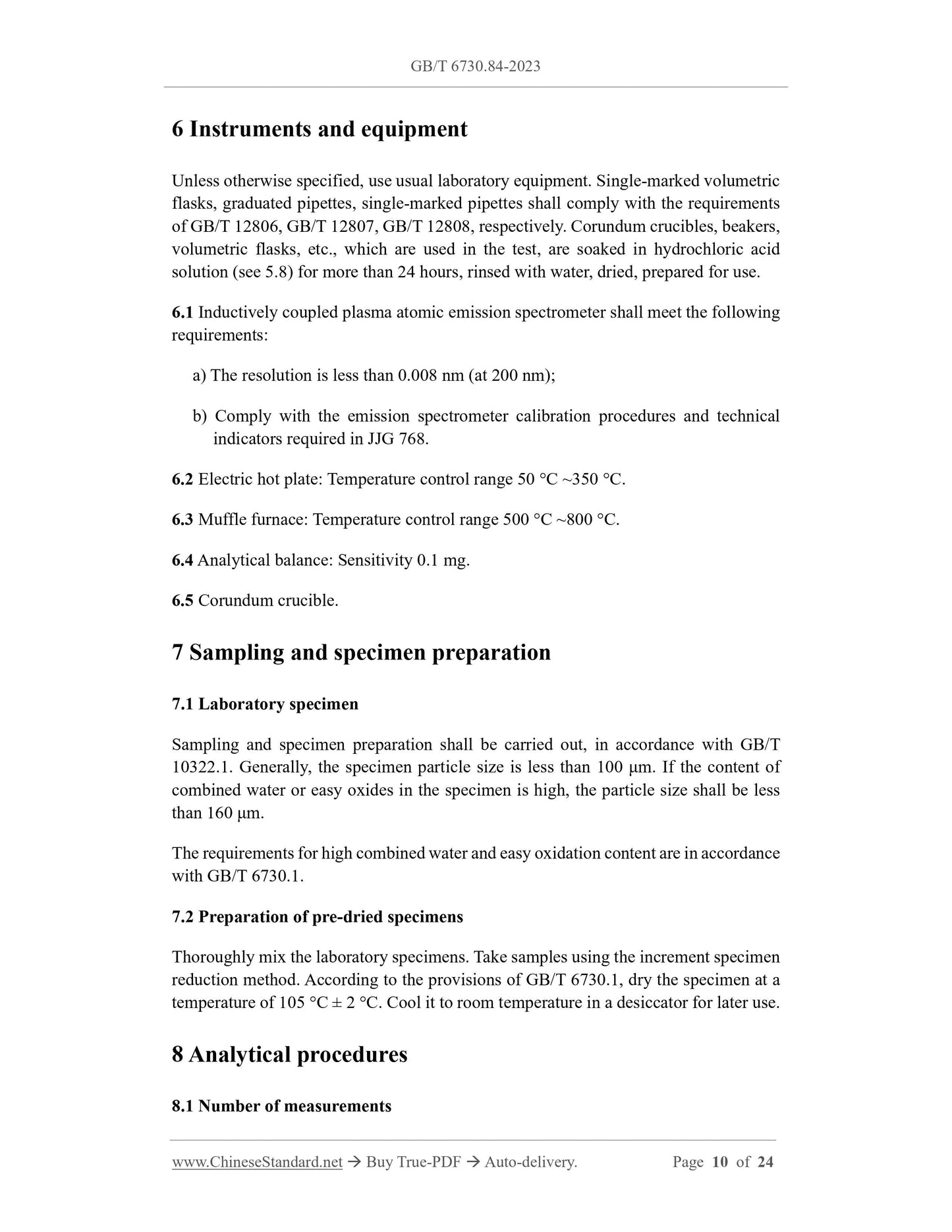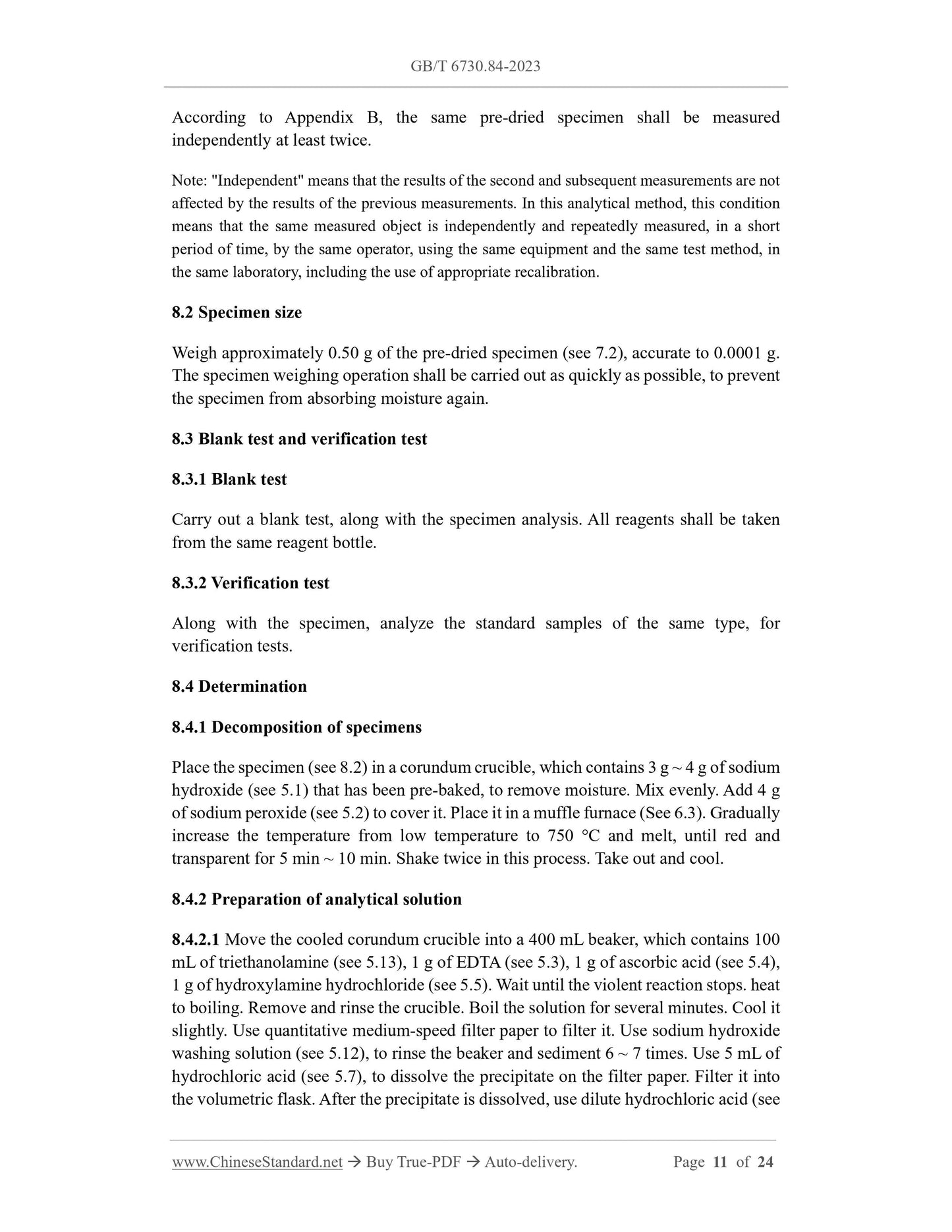1
/
of
7
www.ChineseStandard.us -- Field Test Asia Pte. Ltd.
GB/T 6730.84-2023 English PDF (GB/T6730.84-2023)
GB/T 6730.84-2023 English PDF (GB/T6730.84-2023)
Regular price
$260.00
Regular price
Sale price
$260.00
Unit price
/
per
Shipping calculated at checkout.
Couldn't load pickup availability
GB/T 6730.84-2023: Iron ores - Determination of total rare earth content - Inductively coupled plasma atomic emission spectrometric method
Delivery: 9 seconds. Download (and Email) true-PDF + Invoice.Get Quotation: Click GB/T 6730.84-2023 (Self-service in 1-minute)
Newer / historical versions: GB/T 6730.84-2023
Preview True-PDF
Scope
This document describes a method for the determination of total rare earth content, byinductively coupled plasma atomic emission spectrometry.
This document is applicable to the determination of the total rare earth content in iron
ore, iron concentrate, sinter, pellet mineral products. Determination range (mass
fraction): 0.10% ~ 15.00%.
Basic Data
| Standard ID | GB/T 6730.84-2023 (GB/T6730.84-2023) |
| Description (Translated English) | Iron ores - Determination of total rare earth content - Inductively coupled plasma atomic emission spectrometric method |
| Sector / Industry | National Standard (Recommended) |
| Classification of Chinese Standard | D31 |
| Classification of International Standard | 73.060.10 |
| Word Count Estimation | 18,161 |
| Date of Issue | 2023-08-06 |
| Date of Implementation | 2024-03-01 |
| Issuing agency(ies) | State Administration for Market Regulation, China National Standardization Administration |
Share
